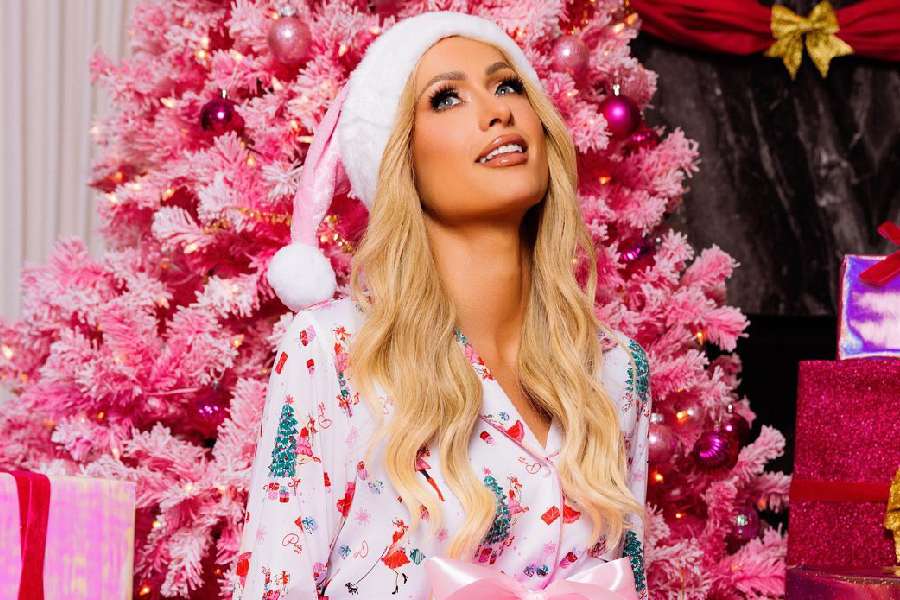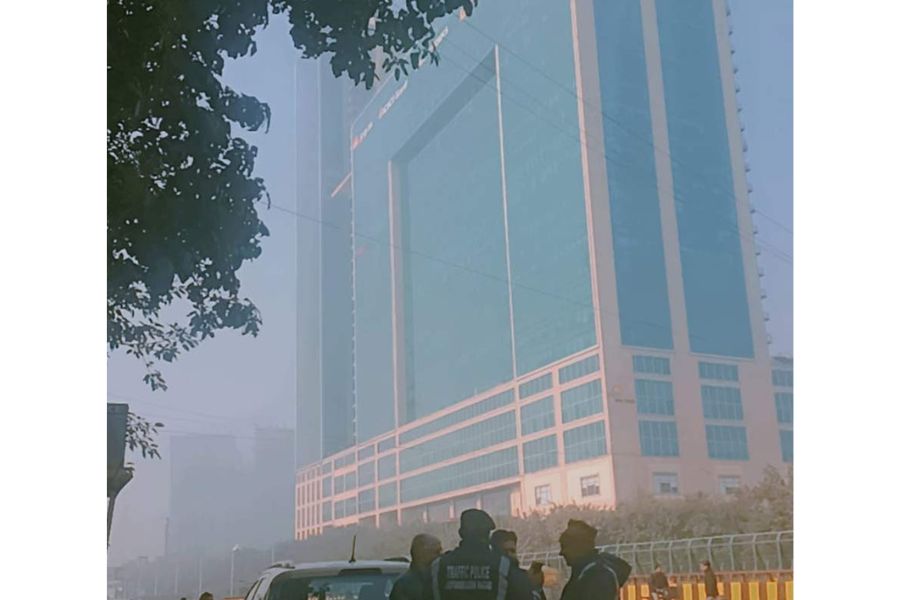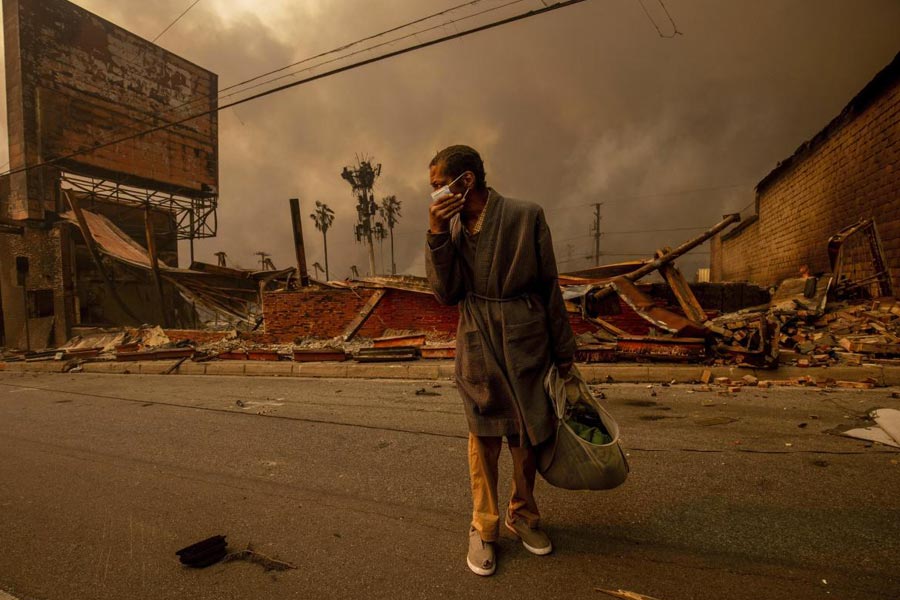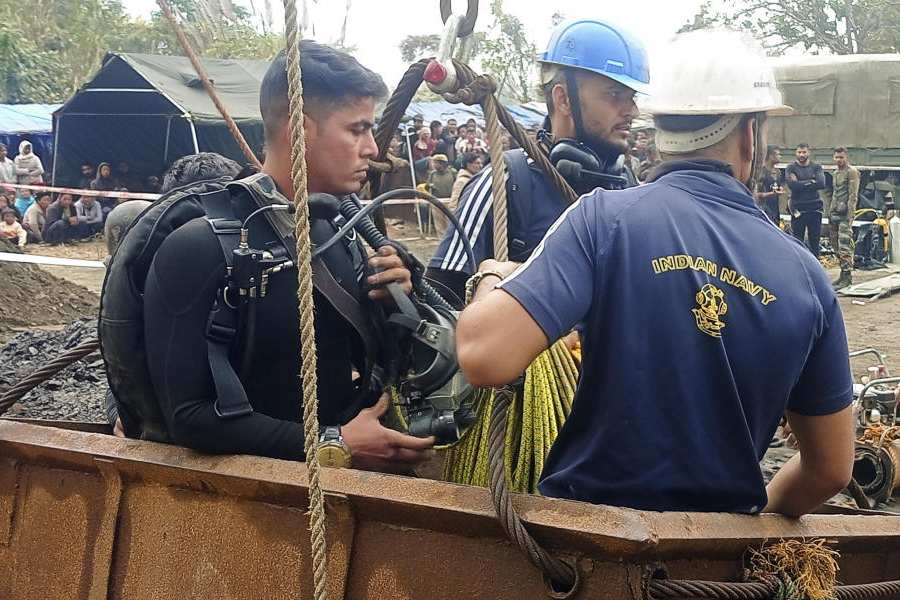As a part of ABP INFOCOM 2023, an engaging and enriching panel discussion on ‘Houseful to Now Streaming — The New Yardstick of Movie Success’ saw filmmakers Imtiaz Ali and Srijit Mukherji, and actress Swastika Mukherjee exchange ideas on the topic. Moderated by Priyanka Roy of The Telegraph, t2, the session was held at ITC Sonar on December 1. Excerpts from the session...
Q Priyanka Roy: To start on a lighter note, where would you as an audience put yourselves from among Netflix’s viewer categories of starters (those who have watched around 2-5 minutes of a film/series and then leave it), watchers (those who watch at least 50 to 70 per cent) or completers (who watch 90 per cent or more)?
Srijit: Watchers and completers mostly. Maybe because I tell stories and make films as well, I think a fair chance should be given. Even if I am not absolutely hooked on to some content in the first two or five minutes, I would at least persist for 50 per cent of the story or the narrative and then take a call. If it still doesn’t engage me, then possibly I will move on, but otherwise I complete it.
Q Is there any that you started but could not finish?
Srijit: No, luckily the last two web shows that I watched, Kaala Paani and The Railway Men, I completed… actually binge-watched.
Imtiaz: I think I am a new category. It’s called repeater. I love repeating the shows that I have seen one time. It is much less tense as it avoids the question of whether I am going to like it or not. There’s so much content that it is a big decision to watch something. So repeating is more comforting to me. So I tend to be a completer and I am also a repeater if I like something. Like I have seen Narcos several times, and a lot of other shows too. There is a show called The Wire, a very old television show, and I recommend everyone to watch it.
Swastika: I do a lot of recce and a lot of studying before I decide what I want to watch. I want to watch them at a go and I only opt to watch long series if I know I can finish it in one night or maximum two nights, back to back. I do watch a lot of documentaries that are there on Netflix because they are limited series and they have three to four episodes, so it’s just less time-consuming. But I did finish Squid Game: The Challenge which has just come out. And, of course, I watched Kaala Paani.
Q Priyanka: Irrespective of platform or medium, what, for you, makes for a successful film?
Srijit: For me, I think the success of a film primarily depends on two things. One, whether I am happy with the film or not, because my first audience is myself. I have always maintained that whether a film succeeds or fails there is no formula to it, at least none that I know of. The only person I can cater to in that sense is myself, so I would make films which I would happily watch. The second parameter and the more external parameter is mostly from the perspective of the producer because he is a person who is investing financially in my narrative or my dream or my story. Is it getting the maximum amount of audience that it is supposed to or I expect it to?
That is an expectation based on a parameter and it’s a combination of a quantitative and a qualitative parameter. It is quantitative definitely but it is also qualitative because it’s targeted; I feel that after making a particular film, let’s say if I look at my filmography, if I make a Nirbaak, the expectation of its audience base, and let’s say if I make a Zulfiqar, or more recently a Dawshom Awbotaar, the expectation of its audience base will be different. So based on that expectation, am I getting that audience quantitatively or not? If I get it then it’s a success, if I don’t, then it’s a failure.
Imtiaz: Everything that Srijit said is valid for me and for most directors I think. I feel we cannot underplay the fact that somebody has invested money in us and in our dreams and if we want to continue dreaming and making them into reality we better make sure they get the money back. That is an important thing for me in a very impartial business-like way. Apart from that I feel that it’s a subconscious realisation, that I think this movie has been good or successful. There are so many facts and figures and so many people’s opinions and there are some people who feel that “arre how do you not realise that this film is a flop and how do you not realise that this film is awesome” and so on. But there will be somebody else having a completely different narrative because films are so subjective, personal. Then over a period of time you come to realise through ESP (extra-sensory perception) that this film is good or bad in terms of being successful or unsuccessful. Mostly who tells this to you is yourself, because aapko andar se pataa hi rehta hai.... I don’t rely on any one particular thing, least of all critics, to tell whether a film has been successful or not.
Swastika: My take will be very different from the directors’. I feel if the audience is still talking about the film after a decade or after five or six years... like Srijit and I were discussing on our way to the auditorium that every week people still post clips of Jaatishwar (2013) and Shah Jahan Regency (2018) on social media in different contexts. Also Bhooter Bhabishyat which released in 2012 and people are still talking about it. Wherever I go, in my travels around the world, I have met people, mostly Bengalis, who have watched that film, more so after it has come on the OTT platform. With this man sitting here (pointing to Imtiaz Ali), I think Jab We Met is a film that is an anti-depressant for tons of women like me
Q Priyanka: We are repeaters of that, we fall into that category.
Swastika: Yes, it’s just like sunshine on a very dull day.
We just go back to that film for very different reasons. So I feel as an actor if your work is getting watched and re-watched over decades and people feel the same excitement, enthusiasm and happiness watching it, I would really feel that yes, this film is successful.
Srijit: Very nice example which Swastika pointed out. I agree that Jaatishwar and Shah Jahan Regency are successful films because people still discuss them. But when they released, they were the rare box-office failures in my filmography. I wear it like a badge of honour. I feel that through OTT and other modes they finally got the audience that I expected them to get when I first made them. So immediate box-office return might not be the only parameter of the success of a film. And if you look at his (Imtiaz’s) filmography, Tamasha is an absolute favourite of mine. So is Rockstar, so is Socha Na Tha. But none of them got the box-office success of a Jab We Met or a Highway. But we still talk about these films.
Q Priyanka: Do you think a film that had a direct-to-digital release or was released in theatres first and then made its way to the digital platform is more ‘successful’ because it’s there for a longer time and people have the luxury to watch it over years and watch it many times over unlike in a movie hall where it is there for a limited amount of time?
Srijit: Absolutely. And it also enables a film to seek out its audience. A film might not seek out its audience and the correct audience may not seek out the film, given the exhibition and distribution constraints in India. OTT gives you that option. If you go back a few years, today’s OTT is yesterday’s DVD or CD or VCP. So an Andaz Apna Apna, which is a cult classic right now, failed miserably when it released. A Jaane Bhi Do Yaaro, which is also a cult classic now, only succeeded later when it released on DVDs and VCDs and tapes. Here what happened is that the correct audience sought out the film and the film also sought out its audience.
Imtiaz: I think we have reason now to be happy that we can make different kinds of films and shows, with content of different durations and put them into the suitable medium for that work. Which is not an option that Srijit or I had 10 years back. It is easier now. The first OTT show that I did is called She. I had the story for 10 years and I was thinking of how to make it into a film. But it never fitted into the duration of a feature film. When the OTT option came, then I realised I can make it, and the moment I pitched it, it just got made. That option is available and as filmmakers and artistes we must be happy that we can do that.
Q Priyanka: Because of which I think a lot of projects in the past got shelved… they didn’t get made as they had to fit into the medium of a film and its demands of a theatrical release.

Imtiaz: Also I was thinking about those films that have a legacy before the advent of any alternate media. There was Mughal-e-Azam, Sholay and some 20-odd other films. But only 20 over a period of 50 years. So very few films made it to the legacy bracket. There were many other films that for various reasons have not retained that. Those films will never be watched but they are brilliant films. In fact, there are many films in Bangla. Srijit is kind of working on and labouring to bring to the fore his films. It’s a brilliant idea. But there is so much that gets lost. Now there is an opportunity to showcase all of that. So I feel it is a positive time.
Swastika: A film like Ijaazat. I watched it later, and there is hardly anybody who has not watched the film. But my parents told me when the film released it didn’t work because it was way ahead of its time. So if OTT was not there I feel my generation or my daughter’s generation would not have the opportunity to watch these films, which are pieces of art. A film of mine, Tasher Ghawr, is on Hoichoi and it’s 47 minutes of monologue. I am the only actor there. So if my director wanted to make it as a film he would then need to drag it beyond its time, and it would have become something that he didn’t want to make. The 47 minutes is what is apt for that film and if it didn’t have a OTT release it would have gone to a short film festival, and the possibility of thousands, even lakhs of people watching the film just would not be there at all.
Q Priyanka: How does one gauge the success of a film on streaming platforms? Apart from the global top 10 or top 3 lists based on how many minutes watched, is there a way?
Imtiaz: There is a way but unfortunately you have to rely upon the services like Netflix or Amazon to give you the statistics. They do a study and find out the numbers. These numbers speak to them in a different way but they don’t speak to us in the same way. We don’t understand whether 571 points is good or bad. You got to take their word for it when they say your show has done well. But if you rely on ESP you will also get to know if it’s done well or not. When I started making films I didn’t really understand the numbers or box office also, honestly. Now it’s the same situation for everybody in the digital platform. Beyond a point of time we will learn how to gauge the numbers and know for sure whether it’s done well or not.
Srijit: I am an absolute contrast to that because till 2008 I was working as a professional econometrician and a statistician. So numbers speak to me all the time. Be it box office, be it OTT, in fact in case of OTT it is a fascinating subject because these are new parameters which are being developed by the streaming platforms. When I make a web show or when my film releases, I actually go and irritate the hell out of platform executives to get the actual numbers. Not only the actual numbers but how these parameters have been derived, what is the algorithm which is being used. So if you are saying one completed stream, how many minutes are you assuming? What is the subscriber base that is increasing? How much of the increased subscriber base can be attributed to your show? Things like these. So that critically acclaimed or not I can find out by seeing what is Priyanka Roy saying about your series or what is a Baradwaj Rangan saying about your films. But for the numerically-driven like me, if you have to take a box-office parallel of an OTT series, then I actually get behind the scene, look at the numbers and then I understand that say a Chhinnamastar Abhishap or a Darjeeling Jomjomat is much more successful than say a Rekka or a Janbaaz is far superior in terms of numbers than let’s say a Ray, though Ray was more critically acclaimed. So all of this parameter matrix becomes very clear to me. And of course there are two very easy thumb rules for understanding whether it’s worked or not — the keenness or promptness of the production house to give a success party, that is an important parameter, and the second is how fast are they contacting you for the second season.
Q Priyanka: Are all three of you still romantic about the idea of seeing your films on the big screen? Is that still the big dream or have you learnt to adapt to changing times and different platforms?
Swastika: Well I have been working since the digital did not exist. We had the big cameras that made a lot of noise and a particular quantity of film (reels) used to come on a daily basis. I have worked at a time when there were no monitors. Everything was the director and the DoP’s eyes. We could only see ourselves much later and probably do patches of shoots or reshoots because some configuration has gone wrong. From there, I have seen the transition of everything to digital, where the director has the pleasure of 25 takes because there is no dearth of digital space.
But yes, the butterflies in our stomach work differently when we see our faces in halls and the experience is always very very different to see your face on posters and see people thronging to the theatres and the experience in a dark space. Every feature of your face, muscles, are seen from close, it’s as though you can see the actor up close and personal, which people miss out when they watch it on a phone. So from 70mm to the small width of a phone, how much of the performance really comes across when you watch it on a minute scale?
Yet when I had travelled to Ahmedabad earlier this year on work, and was visiting touristy places like mosques, forts, imambaras and even in that secluded part of the city where there were hardly any people, someone came up to me and told me, “Aapka film Qala dekha hai maine Netflix pe”. Someone else talked about Criminal Justice. I felt shocked, speechless, though I should have been happy, but I couldn’t believe that in parts of the country where we would not expect that we would have a Disney Hotstar or a Netflix kind of an audience, they watched it and they remembered.
So that is the change we should all be happy about. But since I started so young at a different time, the excitement and the nervousness, the anxiety and the happiness, all of it is different when you walk into a theatre and watch yourself so big and so bold.
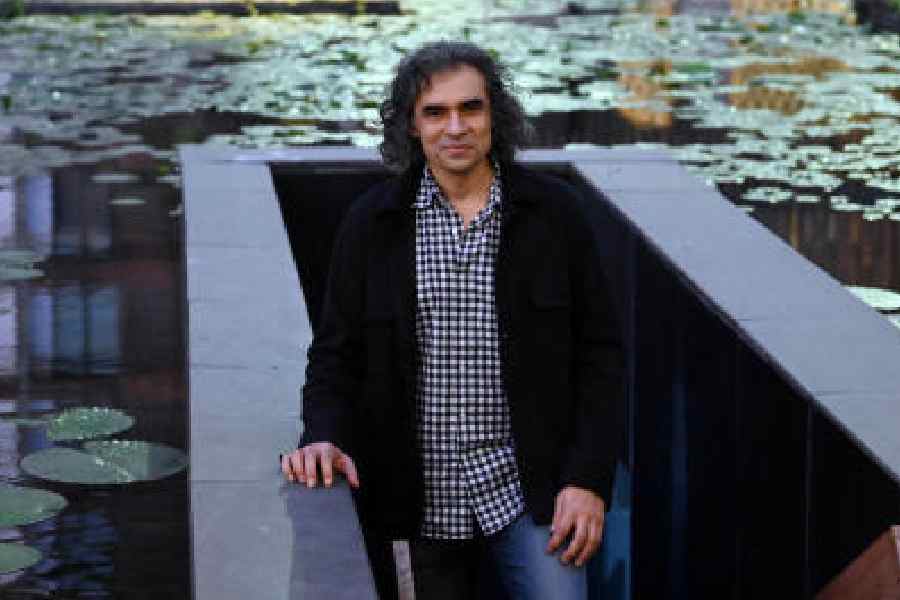
Imtiaz Ali
Imtiaz: Very clearly I am always thinking big screen. I can’t help it. I am thinking how a shot will appear, how the next shot will follow it, and there are certain half-baked visuals going on in my mind when I am writing the script also. And since I am director there is some sort of a shot breakdown also going on in my mind that isske baad ye aayega and then this and so on. The visualisation is always for the big screen though, including how the audience is reacting. Maybe that’s just the training that I have. It’s what I have always thought and I continue to do so. And even though I am directing something which I know will primarily be not seen on a big screen, I can’t help making it for the big screen. It’s a different kind of a zing that lets me make the most cinematic picture if it has to come on the small screen. That also becomes interesting. Because even as an audience, when I am looking at something on the OTT — and I watch OTT on a television screen — I am looking for a cinematic experience. So I am always trying to create a cinematic experience.
Q Priyanka: I think filmmakers are also doing that. I don’t think they cut corners. I think if you look at the big-scale shows, they are all made in a cinematic way. Even Indian shows like Special Ops make it larger than life with sprawling desert scenes though they are aware that some will watch it on the smallest screen possible. I mean that doesn’t stop filmmakers from doing that as that’s the vision, right?
Srijit: Actually, it’s a very interesting topic. There is an ecosystem of lenses that defines what you are making for. Now when I write something, I decide whether I am going to do it for the big screen or for web. But even there, for the lensing purpose, it’s something in between the boxy TV experience and the big screen. So, subject-wise or character arc-wise, or length-wise, as some stories need a definite run time to develop backstories and sub-plots, which cannot be fitted into one-and-half or two hours... so for such topics, though I know it is web material, even there I would not resort to lenses that cater to the boxy experience. Platforms that have irritatingly interfering supervisors on the set give you feedback like, “Sir, not enough closes”, which is their way of saying that you are going the cinema way. That you are using wide lenses, you are using mid lenses, please remember that people are going to see it on a phone or maximum a TV screen. So that is an aesthetic battle that goes on and sometimes we win that battle and sometimes we lose it. But like Imtiaz, I like to push for lenses and shot-taking and shot division which give a cinematic experience even if it’s for a web show.
QPriyanka: Do you feel that when you release a film on a streaming platform the pressure is off to a large extent because there is no pressure of Friday box-office or an opening weekend? Secondly, what and why is this obsession that audiences have with box-office figures predominantly for Hindi films, where everybody wants to know how much a film has made on the first Friday rather than appreciating it for what it is or wanting to know what it’s about?
Srijit: See if you have a social media profile, the pressure is there. Only if you are living in the Himalayas away from X, Facebook, Instagram and the other social media conduits, then there will be no pressure. Otherwise, as long as there is social media as long as every move of yours is being quantified, analysed, dissected, evaluated by people who are experts and by people who are not experts, there will be pressure. Of course, there are the other parameters which we were discussing at the beginning of the conversation. So there will always be pressure in the public sphere.As far as the obsession with box-office numbers is concerned, one part of it comes from the subjective nature of our craft. Unlike sports, when Virat Kohli or Rohit Sharma makes a hundred, they make a hundred. There is no subjectivity to performance in the sports arena. So you know for certain that this guy succeeded or this guy failed. But for a critic, Tamasha might be the greatest film in the world but for another critic it might not. Similarly, for a member of the audience, Dawshom Awbotaar might be a brilliant film, for another it might be an absolutely bakwaas film. So there is no objectivity to opinion. So this dependence on box-office numbers, to my mind, is to seek objectivity, so that there is some objective parameter to a film’s success.
Swastika: It’s a difficult question to answer as an actor but I feel that on any of the OTT platforms nowadays you have that top 10 movies or series… and as actors we all want to see our films staying in that top 10 bracket for as long as possible. Like Qala was at 1, then 3, then 6 and then it came back to 2. And my friends were also updating me about that number. So it’s almost like your ‘house’ gets a point based on your performance just like it was on sports day in school.
Imtiaz: I only want to say that nobody wants to make films with an objective view. It’s very subjective and very personal. You want to make a film because you want to make it. And I hope that it does very well. Is it the most successful formula that I can make a film for? No, those are not the reasons that most people make films for. For the audience also it is the same thing. Subjectively, they might like a movie which objectively might not be the most successful. And I think that the objectivity of the audience has to be maintained and everybody should have their own opinion. I feel that every categorisation, every norm, has a certain procedure but it always finds a way of breaking out and seeking what it likes, individually and subjectively. I feel that is very essential for the success of any art because art does not originate from the concept of commerce. There’s a certain desire that promotes the creation of the work and which promotes the audience’s decision to go and partake of it.
Q Priyanka: This is the first year that a film called Sirf Ek Banda Kaafi Hai, a Manoj Bajpayee film, which released first on Zee5 and it did so well that the producers actually went and released it for a limited time in theatres. This hasn’t happened in India before. How do you look at this in terms of changing the game and do you think it has the potential to be a trend?
Imtiaz: More power to them. It’s an awesome thing that happened and I hope that many more things happen like this, that if it is successful in one medium, it comes to the other and vice versa.
Srijit: The actual trend is of a film not doing well at the box office because it was made for a niche audience but as per the requirements of streaming platforms it needed to have a nominal release and then to have a proper release and then doing very well. For example, my films Sherdil and Shabaash Mithu, both were in the 1-5 position for almost a month but they didn’t do well at the box office. That is a common trend and that at its extreme position results in a Sirf Ek Banda... kind of a scenario, where for producers, the response will be a green signal to go for a more traditional distribution.
Q Priyanka: Streaming platforms like Netflix, Apple TV and Amazon are actually putting their might behind films like Martin Scorsese’s Killers of the Flower Moon, a recent example where the film was released for a limited time in select theatres and then they start playing on the streaming platform. Alfonso Cuarón’s Roma, which won a lot of Oscars in its year, is another example. How do you look at this trend of streaming platforms having so much control and don’t you think that films should first be released in theatres, specially the ones that come from auteurs like this?
Srijit: I think it totally depends on the kind of film. It can’t be a general thumb rule. Certain films should directly release on OTT, otherwise it becomes a risky proposition for the producer to release a very niche film or a very specialised kind of film where the expected audience base will be very low. Any distribution or release has its own cost. So it totally depends on the film whether it should be directly released on OTT, have a traditional release or go for a nominal release before an OTT one.
Imtiaz: I think there should be no rule at all. Everything should be made and designed according to the film. All good things have been said about OTT platforms but see US is a very matured market for OTT but India is not. We’ve done well in releasing films in the theatres and then we sell it for digital airing as well. So in that way it’s been good for Indian filmmakers up till now. But the dangerous trend is that the best films of the West are not on any OTT platform. That’s because when an OTT platform invites a film to be on them, they want their kidney, liver, blood and bones also. So the best filmmakers and best studios say, I am not going to give it to you. So there’s a certain type of films that are missing on the OTT platform, like a Western film. Indian films are still available. And these huge streaming platforms have this might, which makes a filmmaker or a studio nothing in comparison. And if four of them get together and say let’s monopolise this shit, then we’ve had it. So we should not encourage too much power to go to those who plan things and finance things.
And then they have an opinion on everything, a flower vase, a costume, a lipstick, who is standing behind, at what angle the window should be open, then it becomes a problem.


